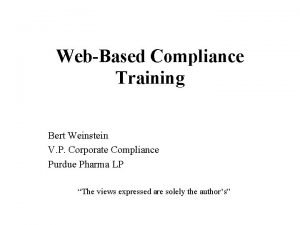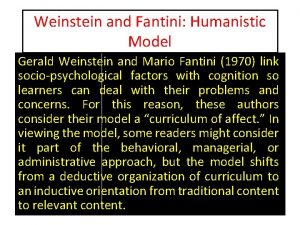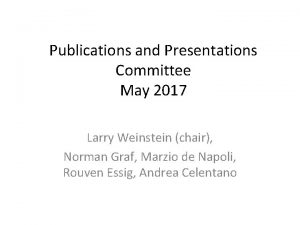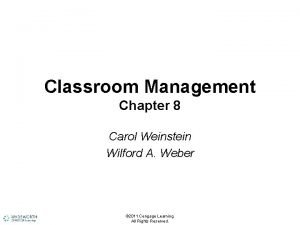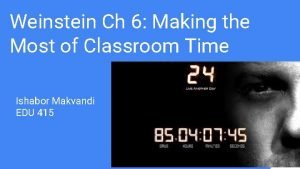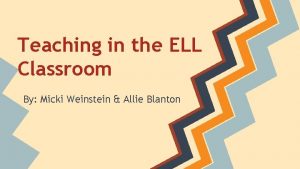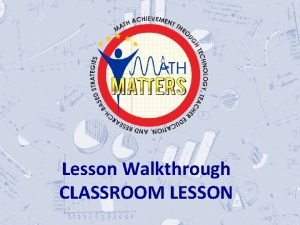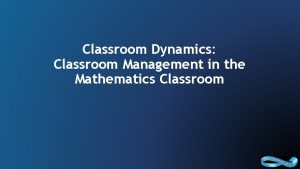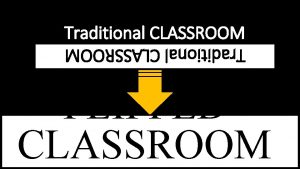Weinstein Ch 6 Making the Most of Classroom











- Slides: 11

Weinstein Ch 6: Making the Most of Classroom Time Ishabor Makvandi EDU 415


Different Types of Time ● ● ● “Mandated Time” “Instructional Time” “Engagement Time” “Meaningful/Appropriate Work Time” Lesson Planning, Routines, Behavior Control, Socializing, Wait Time

Before you get stressed and start to cry. . .

Strategies for Increasing Students’ Productive Learning Time 1. Maintaining Activity Flow 2. 3. Minimizing Transition Time Holding Students Accountable

Maintaining Activity Flow Jacob Kounin’s (1970) Disruptions to Activity Flow that he observed in Classrooms ● Flip-flopping”- terminating an activity, starting another, and then returning to the first activity ● “Stimulus-bound events”- situations where teachers ar“e pulled away from an activity by an event or object that really doesn’t need attention ● “Overdwelling”- continuing to explain when students already understand or preaching about appropriate behavior

Minimizing Transition Time Three Ways Teachers Can Reduce Potential Transition Chaos 1. Prepare Students for Upcoming Transitions (“ 2 -minute warning”) 2. Establish Efficient Transition Routines (“Daily Warm-up” & Implicit vs Explicit) 3. Clearly Define the Boundaries of Lessons (Start & Finish)

Holding Students Accountable Key Points (Look for what’s in italics in this section ) ● Students take assignments seriously when held accountable for them ● Students are unable to make good use of their time if they are confused about what they’re supposed to be doing ● Teachers must communicate assignments and requirements clearly and monitor students’ progress ● Communicate homework assignments in a clear, organized manner ● Monitor how students are doing by circulating around the room ● Establish routines for collecting and checking classwork and homework ● Keep track of students’ progress on long-term homework assignments(Checkpoints) ● Maintain records of what students are accomplishing

Block Scheduling Two Common Scheduling Configurations ● 4 x 4 Block Schedule: four 80/90 minute instructional blocks are scheduled each day instead of the traditional six or seven. ● A/B, or Alternating Day Schedule: four extended periods each day, but classes meet every other day for the entire school year

Not Just About Time: Instructional Practices and Productive Time in School By: Gad Yair Educational Administration Quarterly, Vol. 36, No. 4 (October 2000) Does more time automatically equate into more instructional or engaged time? (Discuss)

